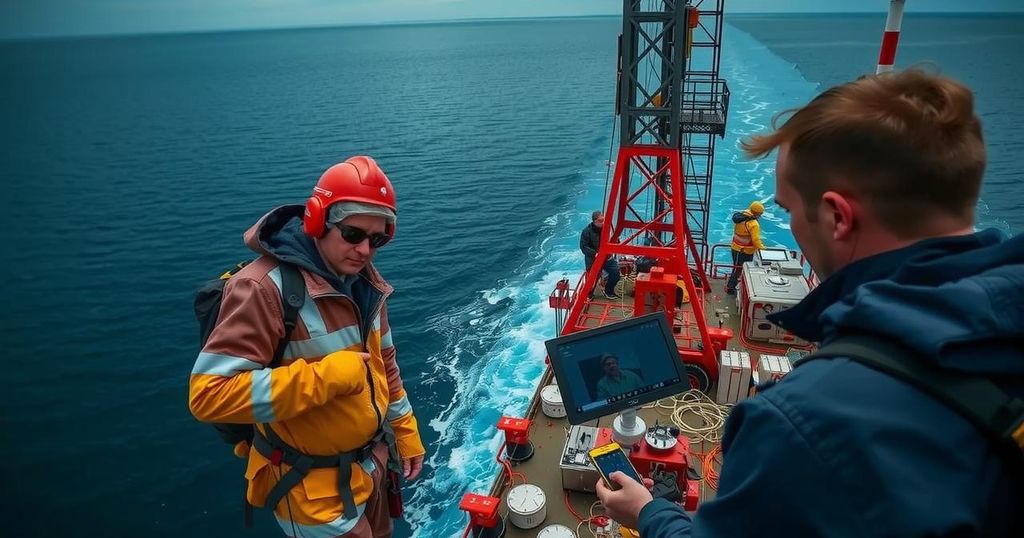Durham Scientist Investigates Tohoku Earthquake Aboard Drilling Vessel
Researchers, including Durham scientist Rebecca Robertson, are aboard the Chikyu vessel investigating the 2011 Tohoku earthquake’s causes through the JTRACK project. The expedition seeks to analyze fault dynamics in a region that previously challenged scientific understanding of subduction zones. This effort aims to gather crucial geological samples and improve earthquake prediction methods.
A Durham scientist is participating in an international research initiative aboard the Chikyu deep-sea drilling vessel, investigating the significant 2011 Tohoku earthquake off the east coast of Japan. This expedition, part of the Tracking Tsunamigenic Slip Across the Japan Trench (JTRACK) project, aims to deepen understanding of the earthquake’s causes by drilling through the fault line associated with the event. The collaborative effort involves an esteemed team of over 60 researchers from Japan, the United States, and Europe, including Durham Earth Sciences researcher Rebecca Robertson.
The 2011 Tohoku earthquake was among the most powerful in modern history, with devastating consequences that included a tsunami, extensive infrastructure destruction, and the Fukushima Daiichi nuclear disaster, which collectively claimed approximately 18,500 lives and displaced over 160,000 individuals. Previous research efforts, such as those conducted by the Japan Trench Fast Drilling Project in 2013, focused on the geological samples from the Japan Trench to ascertain the earthquake’s root causes.
During the ongoing JTRACK expedition, the team aims to analyze the fault zone conditions further and understand why the shallow portion of the fault experienced unprecedented breakage at the time of the earthquake. The team has successfully drilled through the overriding continental plate and into the Pacific oceanic plate, setting up an observatory and collecting valuable sediment samples and high-resolution images for subsequent analysis.
The 2011 Tohoku earthquake was a watershed moment in seismic research, as it defied prior understandings of subduction zone behavior. Prior to this incident, scientists predicted that although subduction zones could generate substantial earthquakes, the shallow sections of the fault typically remained intact. The Tohoku quake proved otherwise, leading to a re-evaluation of how fault dynamics are understood in the context of earthquake science. Ongoing investigations like those undertaken by the JTRACK team strive to elucidate the mechanisms behind such extraordinary seismic events, contributing valuable knowledge to both the scientific community and global disaster preparedness.
In summary, the ongoing research conducted by the JTRACK team, including significant contributions from Durham University’s Rebecca Robertson, seeks to unravel the complex processes leading to the 2011 Tohoku earthquake. This investigation is poised to enhance the understanding of fault behavior in subduction zones, potentially informing strategies for mitigating the impacts of future seismic events. The collaboration among international experts underscores the importance of global scientific cooperation in addressing natural disasters.
Original Source: www.durham.ac.uk




Post Comment